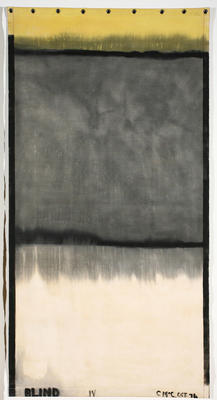Hail Mary
-
Colin McCahon
b.1919
d.1987

Title
Hail Mary
Details
| Production Date | 1948 |
|---|---|
| Collection(s) | Collection Govett-Brewster Art Gallery, New Plymouth. Gifted to the Gallery by the artist in 1983. |
| Accession Number | 83/25 |
| Media | Oil on canvas, remounted on waxed linen |
| Measurements | Framed: 1095 x 1045mm; 935 x 890mm |
About
Although he was never a member of any church, faith and religion were in many ways central to Colin McCahon’s practice as an artist. Hail Mary is the earliest of McCahon’s works held in the Govett-Brewster Art Gallery collection, and is a key work in his series of religious paintings from the 1940s and 1950s. This tranquil painting is a representation of the Annunciation; the moment when the angel Gabriel descends from heaven to announce to the Virgin Mary that she will bear the Son of God. McCahon’s title, which is also inscribed on the painting in the style of a comic strip, derives from the angel’s greeting to Mary: “Hail, thou art highly favoured, the Lord is with thee: blessed art thou among women”.
McCahon’s interpretation of the ancient story of the Annunciation is rich in established symbolism, but also departs from tradition in significant ways. In keeping with Christian iconography, the vivid blue, which repeats around the composition, represents heavenly love and truth, and the lilies symbolise innocence and chastity. However, McCahon’s figures are drawn with simplicity, even crudity, which gives the painting a feeling of the raw honesty of the here and now. The arum lilies, and the serene Nelson landscape — complete with wooden piggery — can be glimpsed in the background, are local details which ground the painting in New Zealand. By relocating the divine drama of the Annunciation to rural New Zealand, McCahon hoped to demonstrate the real coexistence of the miraculous and the commonplace.
McCahon’s composition, a harmonious series of interlocking ovals and curves, reinforces the exquisite tenderness of the relationship between the two figures. The angel, whom McCahon imagines as a woman, rests her hand on an egg-shaped emblem symbolically containing three lilies — the Holy Trinity immaculately conceived in Mary’s body.


